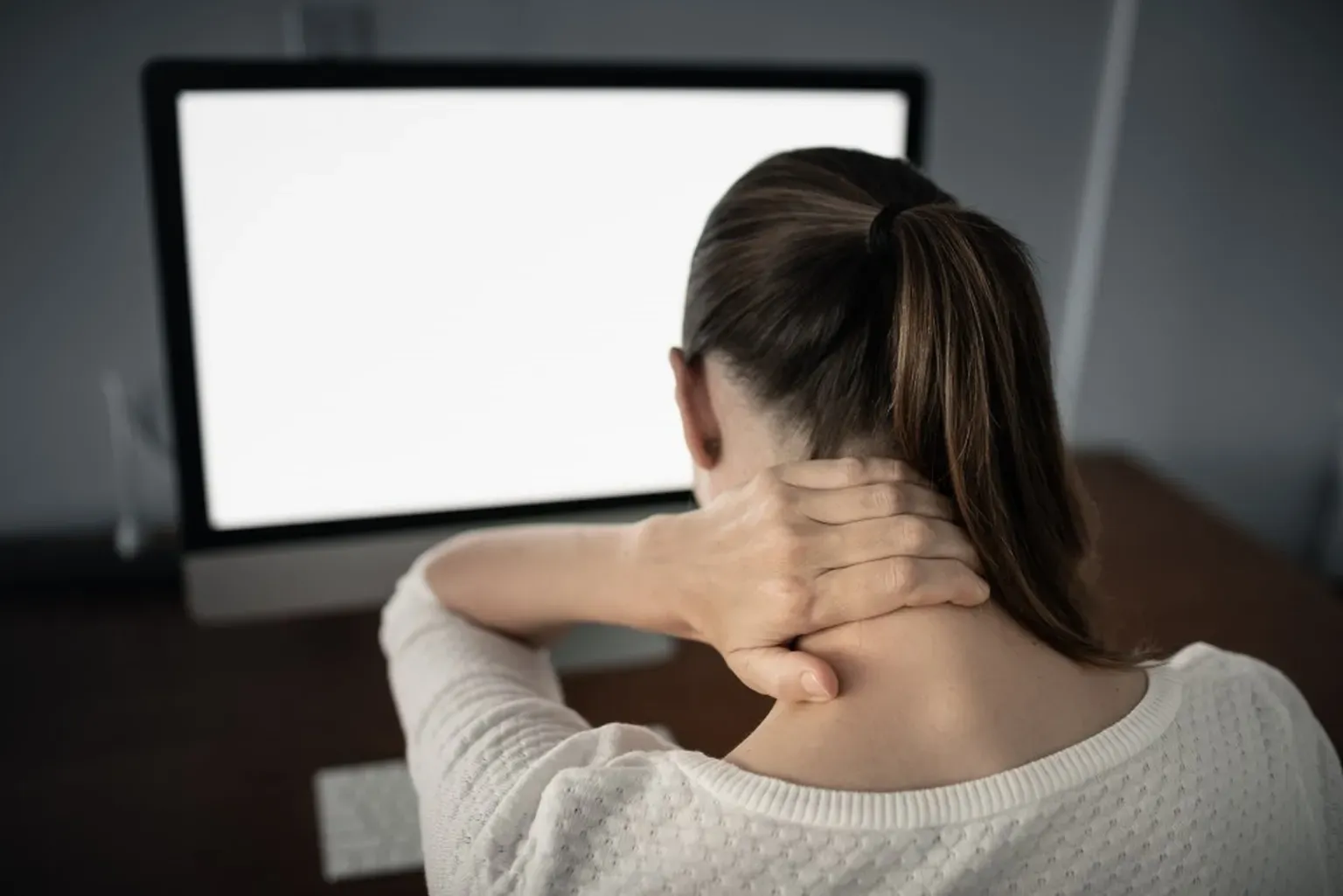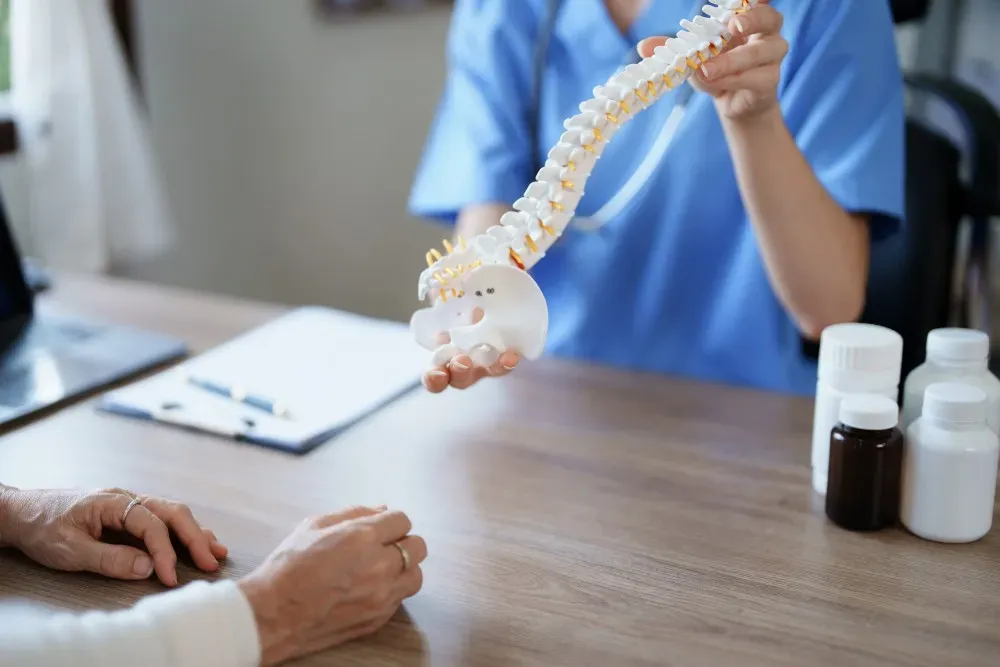Neurosurgery & Orthopedic Surgeons in Jacksonville

What Are Degenerative Spine Conditions?
Degenerative spine conditions develop as a result of natural wear and tear on the spine. As we age, years of overuse, repetitive movements and repeated injuries begin to cause deterioration of the structures that make up the spine.
WHAT ARE DEGENERATIVE SPINE CONDITIONS?
Degenerative spine conditions develop as a result of natural wear and tear on the spine. As we age, years of overuse, repetitive movements and repeated injuries begin to cause deterioration of the structures that make up the spine. Intervertebral discs that protect the vertebrae begin to become drier, stiffer and less flexible, which weakens their ability to cushion the vertebrae and absorb shock and weight. The cartilage that cushions the ends of joints and allows for flexible movement begins to erode, causing pain, swelling and inflammation. The ligaments that support the bones and joints begin to thicken and become inflamed. These degenerative changes lead to the loss of normal structure and functioning in the spine.
While not everyone experiences all these changes, almost every adult over the age of 40 experiences some form of natural spine degeneration. Some people experience no pain or symptoms and continue to live very active lives. But for many people, degeneration causes significant back or neck pain, weakness, numbness and loss of movement.
Keep reading to learn more about degenerative spine conditions and how to recognize the symptoms.
DEGENERATIVE CONDITIONS
The following conditions may develop as a result of degenerative changes in the spine:
- Osteoarthritis. Spinal osteoarthritis develops when the cartilage that cushions and protects the ends of joints begins to wear away. The breakdown of cartilage causes swelling, inflammation and pain around the joint. It may also cause bone spurs to develop in the spinal column. While bone spurs are usually painless by themselves, they cause pain if they compress nearby spinal nerves.
- Disc herniation. Intervertebral discs sit between vertebrae in the spine. The discs are made of tough, fibrous cartilage surrounding a jelly-like inner core and they cushion and protect the vertebrae. A herniated disc develops when a tear in the fibrous cartilage causes the jelly-like core to leak into the spinal column. Herniated discs cause pain and symptoms when the jelly-like core compresses nearby spinal nerves.
- Disc collapse. Over time, tears and deterioration to the tough fibrous cartilage of a spinal disc may cause the disc to collapse and lose height, pressing the two adjacent vertebrae closer together. A collapsed disc can compress nearby spinal nerves, causing pain and other symptoms.
- Spinal stenosis. Spinal stenosis describes narrowing of the spaces in the spine. With less room, spinal nerves may become compressed as they move through the spinal column.
- Degenerative disc disease (DDD). DDD describes a condition that develops when normal wear and tear on the spinal discs cause pain, instability and other symptoms.
SYMPTOMS
Almost everyone over the age of 40 experiences degenerative changes in the spine, but not everyone experiences symptoms. For people who do experience symptoms, they can range from mild to debilitating. The following signs and symptoms may indicate degenerative changes in the spine:
- Low back or neck pain
- Pain that radiates down one buttock and leg (sciatica)
- Pain that radiates down one shoulder and arm
- Weakness, numbness, tingling or pins and needles feeling that travels to the arms or legs
Pain may be worse with certain movements — like lifting heavy objects or twisting — or after long periods of sitting, standing or walking.
NON-SURGICAL TREATMENT OPTIONS
Degenerative changes in the spine can’t be reversed. But many degenerative conditions can be successfully managed with conservative treatments. The primary goals of treatment are to reduce pain, maintain strength and range of motion, and slow down the progression of damage. Your treatment plan may contain the following:
- REST AND ACTIVITY MODIFICATION.
Try to avoid or limit your participation in activities that aggravate your pain or cause flare-ups. Take time to rest after being active and use hot and cold compresses on your back or neck to soothe post-activity pain and inflammation. If you experience an acute flare-up of back pain, stop your activities and rest for a few days until the pain becomes manageable.
- MEDICATIONS.
Over-the-counter pain medications may be all you need to manage pain and flare-ups. Analgesics like acetaminophen can help relieve mild to moderate pain, while NSAIDs can help relieve pain and inflammation. If you’re experiencing significant pain, your doctor may prescribe stronger pain medications, anti-inflammatory medications, nerve pain medications or muscle relaxants.
- CORTISONE INJECTIONS.
A corticosteroid injection can reduce inflammation and provide temporary pain relief. While the effects of cortisone shots aren’t permanent, the injections can ease your pain long enough to allow you time to work on building up your strength with physical therapy and regaining mobility.
- PHYSICAL THERAPY.
Physical therapy exercises can help you improve muscle strength, joint flexibility and range of motion, balance and endurance. Your physical therapist will help you practice exercises that build up strength in your core, the group of muscles that protect and stabilize the spine. A therapist can also teach you proper body positions for sitting, standing, walking, lifting and bending that will prevent back injuries and reduce pressure on your spine.
- REGULAR EXERCISE.
Regularly exercising at home is critical to maintaining a healthy, strong back. There are plenty of low-impact exercises you can do that will improve your strength and flexibility while placing less stress on your joints and spine. Try walking, bicycling, swimming, water aerobics, yoga and tai-chi.
- WEIGHT LOSS.
Maintaining a healthy weight can help prevent further damage to your spine. Excess weight places more pressure on your back and joints.
Some people find pain relief through other treatments like chiropractic care, massages or acupuncture.
SURGICAL TREATMENT OPTIONS
Spine surgery is an option if you have significant pain that can’t be controlled with conservative treatments. In many cases, persistent pain is caused by nerve compression due to a herniated disc, bone spurs or spinal stenosis. There are multiple surgical options available to repair damage and relieve pain and pressure on the spinal nerves.
Depending on the condition you have and the severity of the damage, your doctor may recommend a laminectomy, spinal fusion or discectomy to create more space in the spine, remove bone spurs, or remove damaged spinal discs.
If you do need surgery, you may be a candidate for a minimally invasive procedure. Today, even an advanced surgery like a spinal fusion can be performed using less invasive techniques than open surgeries. Minimally invasive procedures have fewer risks, lower infection rates and shorter recovery periods.
INTEGRITY SPINE AND ORTHOPEDICS TREATS SPINE AND JOINT CONDITIONS
At Integrity Spine and Orthopedics, we provide treatment options for patients with a wide range of back, spine and joint conditions. If you’re living with acute or chronic pain from a degenerative spine, we offer orthopedic care and pain management services to help reduce pain and slow the progression of damage. Our board-certified orthopedic doctors specialize in minimally invasive spine procedures to ease pain, inflammation and pressure in the spine.
To schedule a consultation, call 904-456-0017 or fill out our online form. If you’d like a second opinion on an existing diagnosis, we also offer a free MRI review to qualified patients.




